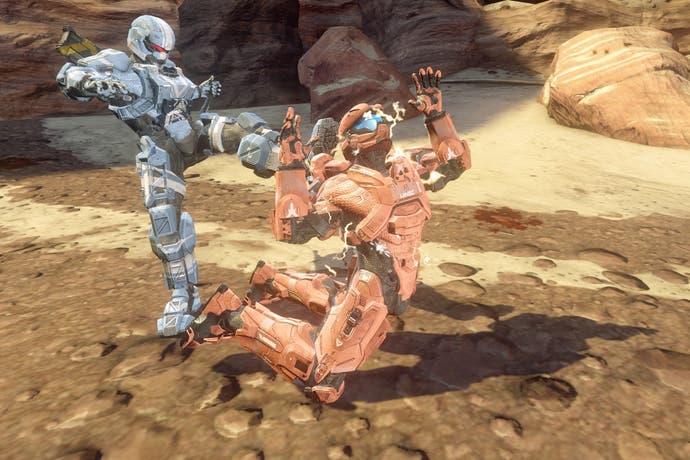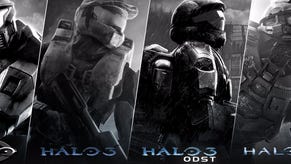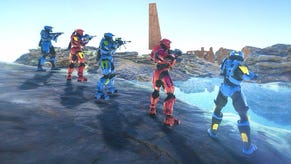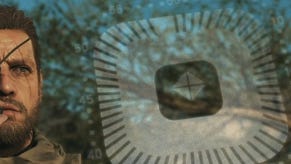Halo 4: Castle Map Pack review
Well fort out.
The Halo 4 approach to multiplayer add-ons has been low-key compared to the bombast of its more earthbound shooter peers. Call of Duty and Battlefield have offered up themed packages, zombies, co-operative bonuses and whatever else might entice players into picking up that all-important season pass.
With Halo 4, DLC studio Certain Affinity and main game developer 343 Studios have simply delivered maps, three at a time. It almost seems quaint, but it's an approach that has paid dividends. After a clunky start with the Crimson map pack, the game has benefited from maps that are classic in design but modern in pace, accommodating Halo's increasingly lengthy list of game modes and livening up the playlists with solid craftsmanship and some beautiful locations. That's a trend that continues in this, the last of the three DLC packs, and another victory of both substance and style.
Let's start with the best of the bunch, and indeed for my money one of the best Halo maps since the heyday of Halo 2. Daybreak is another in a long line of visually stunning Halo 4 maps, this one with an autumnal outdoors theme. Imagine if those Visit Scotland TV ads were populated by aggressive armoured Spartans shooting each other's faces off rather than ruddy-faced English tourists in chunky cardigans drinking malt whisky, and you're on the right track.
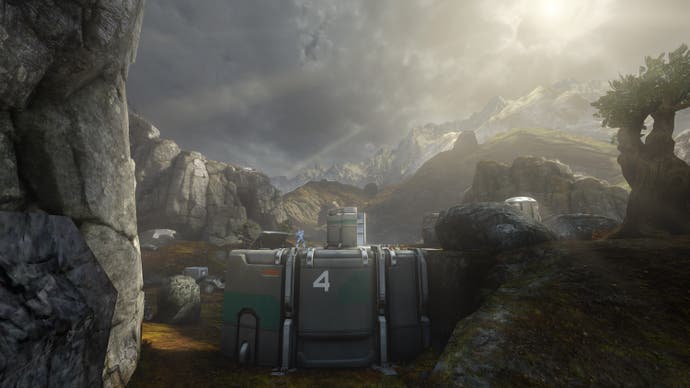
It's a gorgeous highland map and one that uses its rugged terrain for more than just evocative screenshots. It's a three-tier affair, basically, with each level offering - or demanding - a different style of play. Up top you have some wonderfully wide open spaces, perfect for snipers and vehicles. Drop down a little from there and you'll find snaking valleys and gullies where you can scurry away from sniper fire and switch to assault rifles. There are also a couple of small outposts: not much more than medium-sized rooms with various entry and exit points, but ideal positions to fortify when you're on the back foot.
Finally, there are claustrophobic caves and tunnels where melee and shotguns rule. The entry to these twisting caverns is easily missed in the heat of battle, but once memorised they can allow a skilled player to vanish from sight and pop out elsewhere to gain the advantage. Provided, of course, you don't meet the business end of somebody's boomstick in the gloom.
What impresses most about Daybreak is how these elements weave together. It's a map where those who specialise will struggle to dominate, as success comes from your ability to adapt on the fly, from epic long-range shoot-outs to short, brutal, close-quarters clashes and back again. It's a fantastic map, the sort of organic gameplay space that is obviously meticulously designed yet never once feels contrived or fake. The highest praise is that there is no single game mode that suits Daybreak best - it's a true all-purpose map that thrills no matter what you're playing.

Outcast is more tightly focused, a cavernous map punctuated with rock pillars that manage to make it both a large open space but one that offers surprisingly few long-distance sight lines.
This natural cover can be an absolute boon for the Spartan on foot, but a real test of skill for those who make use of the many vehicles, - and this is a very vehicle-heavy map. It comes with not only Warthogs and Mongooses (mongeese?), but a Wraith tank and a Mantis mech suit, all of which need careful use if you're to navigate the cave's fragmented structure.
It's a curious mixture of free movement and restricted space, and one that seems to frustrate many players. Find Outcast's rhythm, however, and it provides an experience that you don't get from many other Halo maps. The temptation is to rush for the vehicles and then bang and clatter your way to the enemy, but shrewd Spartans take advantage of the clever balancing.
There are military bases built into the rock walls, offering mounted guns and the map's few spots of verticality. There are also Spartan laser and rocket launcher spawns, ensuring that being on foot doesn't have to be a death sentence. Make use of the cheeky short cuts through the thickest central pillars and you've got a map built for David and Goliath moments where one good player with the right tools can hold off an entire team.
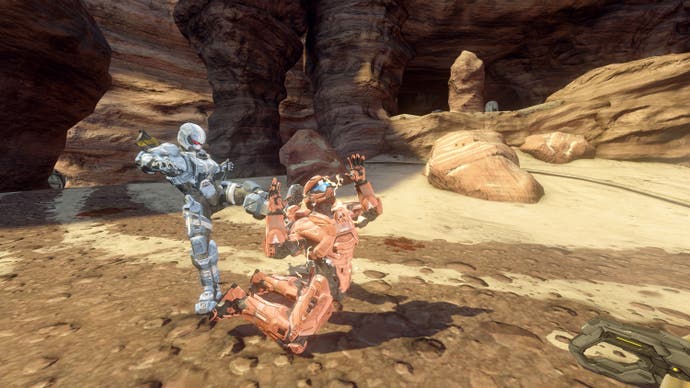
Perdition is an urban map with an ODST visual hook. Corridors, ramps and steps abound, linking together clusters of open space, where parked civilian vehicles and industrial equipment supply cover. There are Warthogs and Ghosts to speed up your travelling from one hot spot to another, but it's really a map where traditional on-foot deathmatch tactics reign supreme. It's a map where you'll never stop moving, and the flow in a well populated match is handled brilliantly - there's always something going on in every corner, though it never feels like you're being herded. The stand-out feature is a tricky fatal drop into a molten reactor core to one side of the map, which can easily catch out the unwary jump-and-shoot player or an erratic Warthog driver.
Perdition is a good map, but it's certainly the least interesting of this selection. The concrete grey aesthetic is appropriate and the runaround layout works, but it feels a lot like a generic sci-fi shooter map - a serviceable throwback that needs a few more tweaks to really bring it to life. It's really only because it's packaged with two great maps - and follows hot on the heels of the Majestic map pack's reinvention of deathmatch traditions - that it feels like a disappointment.
Two and a bit out of three isn't a batting average to be ashamed of, though, and since Castle comes packaged with the usual array of playlist polishes to keep the game fresh, there's absolutely no reason for anyone still loving Halo 4's multiplayer not to embrace it. After all, it's a long wait for Halo 5.
